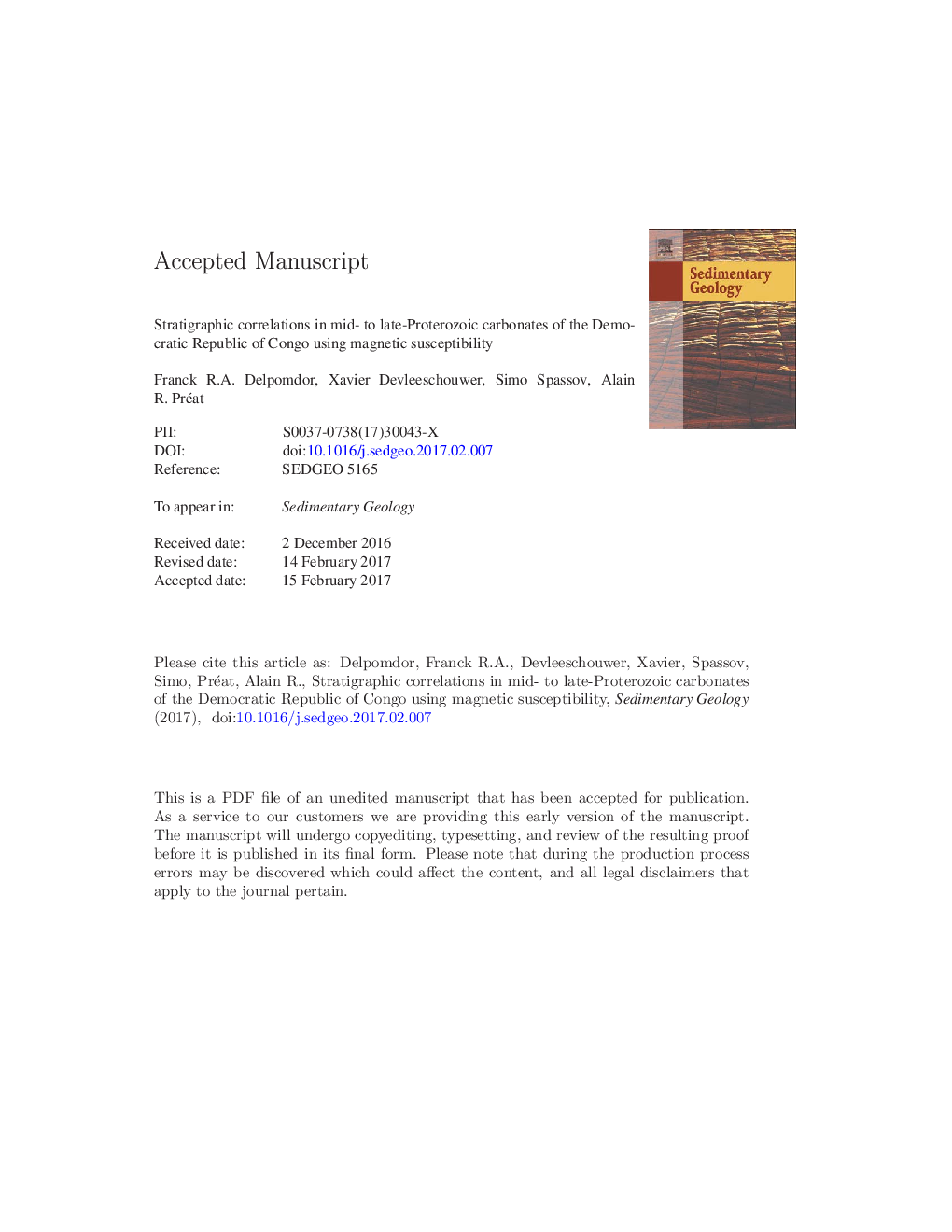| Article ID | Journal | Published Year | Pages | File Type |
|---|---|---|---|---|
| 5781410 | Sedimentary Geology | 2017 | 72 Pages |
Abstract
In this paper, we have tested the application of magnetic susceptibility measurements in Cu-Ag-Zn-Pb-(Fe)-mineralized carbonates of the BIe subgroup (Democratic Republic of Congo) as an efficient tool for regional and global high-resolution stratigraphic correlations in the Neoproterozoic marine carbonates. To achieve this goal, we integrate the low-field magnetic susceptibility (XLF) data with facies analyses, geochemistry and isotope stratigraphy. The microfacies analyses of two cores, Tshinyama#S70 and Kafuku#15, drilled in the early Neoproterozoic carbonates of the Mbuji-Mayi Supergroup reveal a deep carbonate ramp setting associated with a microbial/stromatolitic mid-ramp environment. High-resolution stratigraphic correlations using magnetic susceptibility and C-isotope curves established for both cores, 190Â km apart, suggest a sedimentary hiatus at the base of the Tshinyama#S70 succession. C-O and Sr isotopes and Sr/Ca and Fe abundances show that a diagenetic meteoric overprint affected the series of the Tshinyama#S70 core and a thermal effect related to mineralizing fluids affected the Kafuku#15 core carbonates.
Related Topics
Physical Sciences and Engineering
Earth and Planetary Sciences
Earth-Surface Processes
Authors
Franck R.A. Delpomdor, Xavier Devleeschouwer, Simo Spassov, Alain R. Préat,
